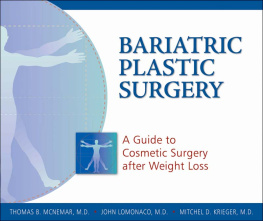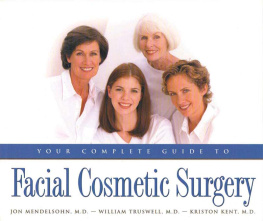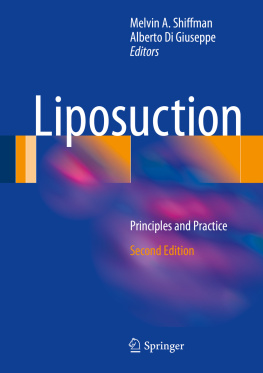Acknowledgements
First and foremost I would like to thank the women who took part in this study. Their contributions were intimate, honest, intelligent and incredibly thought-provoking. Their accounts formed the basis of the study and I am extremely grateful to have encountered them and for their involvement. This study is based on my Ph.D. The project took much longer to complete than it was supposed to and it eventually became a labour of love more than anything. My thanks are extended to Douglas Ezzy and Neil Apted for their engagement with the original project. I would also like to acknowledge the impact of the late Bob White on my formative experience of academic writing. He was always supportive and very passionate about sociology. I still miss him, his enthusiasm and his razor-sharp mind. Meredith Jones and Chris Shilling marked my Ph.D. and I would like to thank them for their encouraging comments. My dear friend Trish Laddrak has been there from the beginning, always ready for a chat, a generous and perceptive thinker who is able to see through a jumble of ideas and miraculously know where the dots need to be connected. My beloved children, Alexander and Magella, have endured the many years it has taken to complete this project with patience and extremely good grace. My parents, Jill and David, support us all in a myriad of ways and I am eternally grateful for their presence in our lives. And last, but by no means least, my final thanks are extended to my partner, David. His untiring interest and unfaltering belief in the worthiness of the themes under discussion made the experience of living in and alongside this project more deeply pleasurable than it otherwise might have been.
Introduction
Whenever a woman is asked why she had cosmetic surgery, her short answer is likely to be I didnt like the way I looked and I wanted to look better for myself. To many people such a response is reasonable enough not to warrant a great deal of further discussion. Given that the vast majority of women living in the developed world are less than happy with their appearance, wanting to look better barely raises an eyebrow. Indeed, finding women who are entirely happy with their appearance is more unusual. They represent an anomaly, a minority group who could technically be described as deviant, and to whom other women look with a kind of wonder and, quite possibly, respect. These women are extraordinarily fortunate since being content with ones appearance inevitably frees up time, energy and money that can be directed elsewhere. While women who undergo cosmetic surgery want to change their appearance, they are also aspiring to join that small group of women who are satisfied with their appearance. They want, more than anything, to look in the mirror and be happy with what they see.
Not insignificantly, as appearance dissatisfaction in women approaches the level of norm, body image anxiety has surfaced as an essential variable upon which the successes of grooming industries like cosmetic surgery are reliant. It is, moreover, to this rising swell of discontent that hugely profitable global organizations market an unprecedented range of grooming products and services designed to redress and assuage the problem. The media with an unnerving and purposive agenda, accompanying us into our bedrooms, bathrooms and seemingly infiltrating our very psyches are usually blamed for distorting the relationship women have with their bodies and their perceptions of appearance. Whilst the effects of the media are undoubtedly pervasive, how they exert an impact is far less certain. Like many others who have examined the progressive acceptance of cosmetic surgery, I assumed that tracking down the impetus behind turning to a surgical fix would uncover the role played by the media, magazines in particular, and of men. That was until I actually started speaking to women themselves and found that those teleological formulas did not quite stack up. Indeed, what I found in their long answers was an angst related to appearances born much closer to home.
This study comprised in-depth interviews with thirty women who had engaged with cosmetic surgery on some level, including twenty-six who had undertaken it, to explore their reasons for seeking surgery. Any suggestion that the media may have encouraged them to undergo cosmetic surgery was poorly received. A few were downright insulted, whereas others were clearly irritated or disappointed with the simplicity, or predictability, of such a proposition on my part which not only roused their indignation but threatened the ambience of the interview. This aside, the participants generally agreed that the media play a pivotal role in disseminating information about cosmetic surgery and in reporting new procedures as they become available, which, they conceded, has normalized cosmetic surgery as a self-enhancement option.
Despite its progressive normalization, cosmetic surgery remains a substantial undertaking. Electing to have a general anaesthetic, the recovery time required, the financial costs involved, and the inherent risks associated with any surgery, means that cosmetic surgery can never be considered as lightly as a cosmetic procedure like a shot of Botox TM or collagen, administered in a doctors surgery or specialist clinic during a workday lunch break. Choosing to undertake cosmetic surgery, on the first occasion at least, still represents an extreme in mainstream body modification technology. However, cosmetic surgery is, at its heart, no more than an intentional and committed grooming strategy enacted to ameliorate, improve or amend body image and, as the interviews proceeded, I began to realize that the real opportunity this study availed was not solely to examine cosmetic surgery as an event; rather, it provided an occasion to consider the underlying appearance dissatisfaction overwhelmingly articulated by participants undertaking cosmetic surgery. Pre-surgical appearance dissatisfaction, albeit with varying degrees of emphasis, was expressed across all interviews as the most consistent reason for undertaking cosmetic surgery. Significantly, the participants in this study described their appearance dissatisfaction as a cumulative process, played out in intimate, self-scrutinizing ritual before a mirror, where the self differentiated its loathed body image and rejected it as no longer acceptable to itself or to others, concluding finally that surgically amending the body was the only real option remaining. In a move that clearly disembodies the self, the self then re-viewed its reflected image as something separate and, once detached from it, the self re-evaluated its image as an object available for amendment. Heightened appearance dissatisfaction and the fracturing of the self-concept it appears to instate, plus determining how these processes emerge and are sustained to the point where cosmetic surgery becomes the only conceivable option, became central themes this study sought to examine.
It was in response to a general question asking whether appearance had been an important issue in their lives when they were growing up that some of the most important insights observed in this study were made. For example, it was in the participants discussions of formative body image construction that evidence of an alignment between the appearance values held by their parents and those espoused in media were observed. Learning to inhabit the body in the process of becoming socially embodied comprises the earliest learning, and findings from this study indicate that when those closest to participants share the same appearance values as those espoused in media, and afford them particular emphasis, formative body image construction is likely to be impacted. The participants confirmed their awareness of mediated fashions surrounding the body, particularly those which signify social success, and they did correlate to the ideals their parents and significant others admired during formative and impressionable periods of body image construction. It was, furthermore, through intimate familial interaction that those ideals were communicated, in both subtle and overt ways, and then internalized and woven into the seminal experience of body image. Many participants stated that falling short of an appearance ideal was something to which a parent had initially drawn their attention. In addition, any failure in meeting the ideal admired by a significant other was further compounded by the perceived sense of ineptitude in meeting the very same ideal adorning the screens, billboards and magazines to which the modern eye is consistently drawn. Formulating body image under the associated appearance constraints emanating from both the intimate and socio-cultural domains makes it inordinately difficult for any girl, teen or woman to ever feel content in her own skin.












